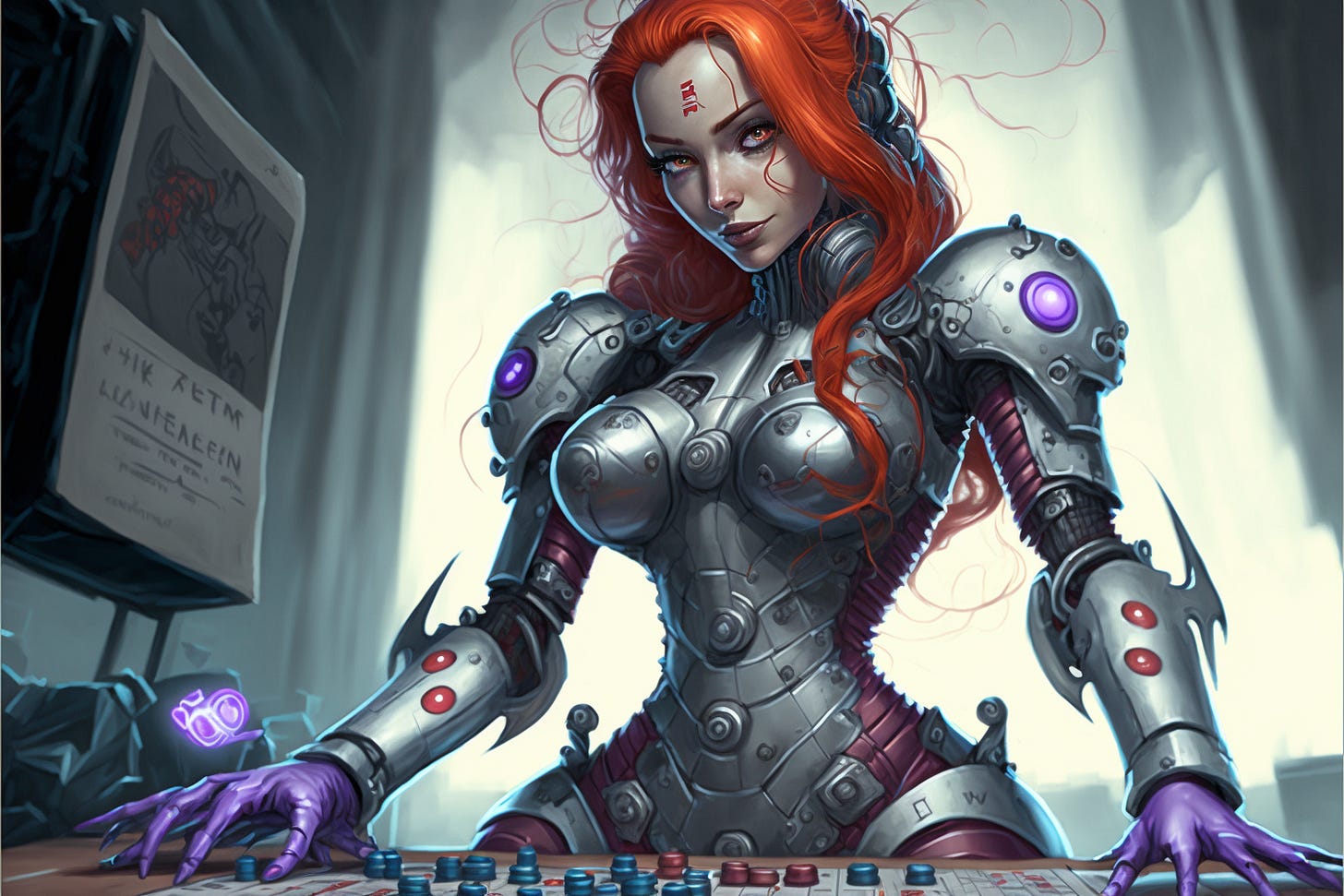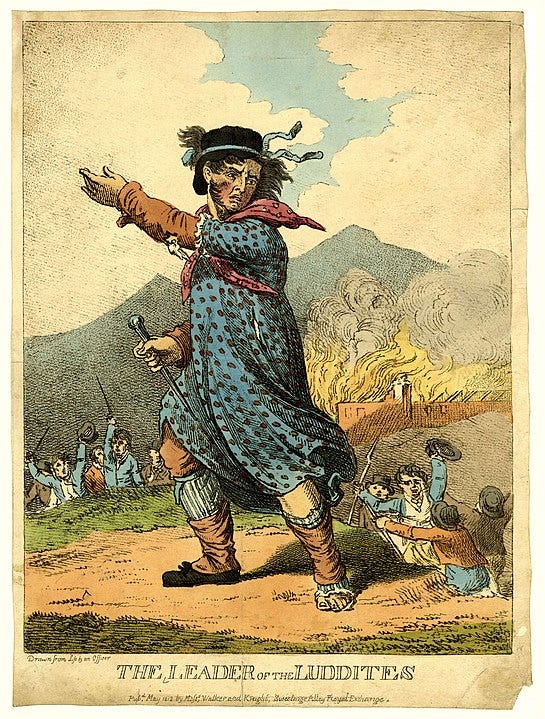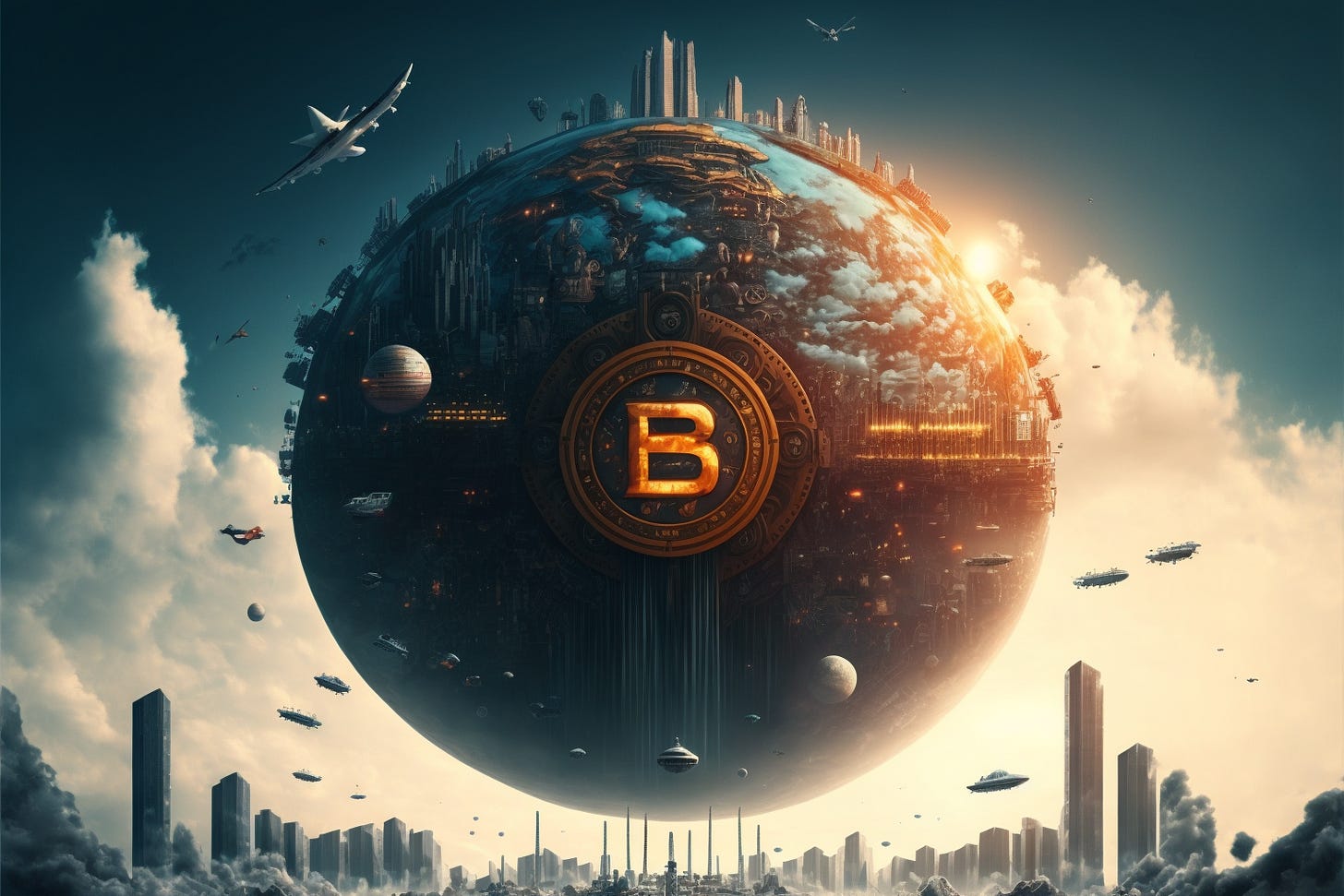A couple of days ago, I posted a tweet that unexpectedly got a lot of attention. This single tweet had nearly 1 million impressions and more than doubled my number of followers on Twitter.


Admittedly, the tweet was intentionally polarizing, but I was surprised at how many people felt attacked and how many people criticized the new development of AI-supported UI/UX design.
I would like to address the most common criticisms and evaluate whether or not the criticism is justified.
The most common criticisms:
"AI will never be as creative as humans."
"Good user experience (UX) design always requires human input."
"These are just copied Dribbble shots. This is not real UX/UI design."
"It looks nice, but any developer would lose their mind trying to implement it."
"This won't catch on anytime soon."
"This is just a short-lived trend, like cryptocurrencies."
"Midjourney is stealing designs from human designers."
“AI will never be as creative as humans.”
This is a typical example of human lack of imagination. It is still often claimed that an artificial intelligence cannot be creative. This prejudice has been refuted at the latest since 2016, when Google's AI "AlphaGo" defeated the world's best Go player. The AI did not simply defeat the player in any way, but with a surprisingly creative move that a human player would hardly have dared.
This simple example surprised many people and if you look at the creative achievements that ChatGPT is capable of today, you have to simply call the argument that AI cannot be creative as ignorance.
“Good UX design always requires human input.”
While AI is not likely to replace human designers in the near future, it can be used to augment their work and support them in their design process.
Here are some examples of how AI is already supporting, or will soon support, user experience designers:
Providing designers with access to large amounts of data and information
Automating repetitive or time-consuming tasks
Assisting with user research and feedback
Identifying trends and patterns in user behavior and feedback
Generating design variations and ideas
Conducting user testing and analysis
Improving the efficiency and effectiveness of the design process.
Overall, AI technology has the potential to be a valuable tool for UX designers, helping them to make better informed and more user-friendly design decisions.
If you're interested in this topic, check out these articles:
The future is here: How artificial intelligence is influencing UX design
AI UX design: A New Way Of Designing
“These are just copied Dribbble shots. This is not real UX/UI design.”

Of course, Midjourney is not currently generating complete and perfect UX/UI design. I never claimed that either. Midjourney generates images from prompts that are specified by users. It generates these images based on the data of images it finds and my given themes and criteria. It is inspired by the work of other designers, makes a remix of it and thus something new again.
Honestly, what designer re-invents the wheel without being inspired by the work of others? Not a good one anyway.
Midjourney is not able to incorporate user behavior or customer needs into the images. That's not the point either. It's about the incredible development that AI is making in various fields.
If you consider that the abilities of ChatGPT can be combined with those of Midjourney and then also with the data from user tests, it should be clear to everyone that we are facing a completely new era in the world of design.
“It looks nice, but any developer would lose their mind trying to implement it.”
Actually, the same applies here. Midjourney images are (still) not finished UI designs, so they don't have to be implemented by a developer either.
However, I will definitely use the Midjourney images as a source of inspiration and that alone is a great help.
As mentioned above, this is just the beginning of a great new time and I am sure that soon there will be an AI that will spit out user-tested, perfectly designed and programmed screens.
“This won't catch on anytime soon.”
There could be countless examples to prove the opposite, but I think the best example is the Luddites:
The Luddites were a group of English textile workers and weavers in the 19th century who protested against new technologies, such as mechanized looms, that they believed were threatening their jobs.
As we all know today, the Luddites were unable to do anything against progress, just like the coachmen against the railway.
Technological progress that accelerates, simplifies and makes production cheaper will always win. This is exactly what artificial intelligence does on all levels. Probably faster than any other technology. Do I think that's good? No! Can I change it? No!
So I'd rather learn the technology early on instead of going under as a eternal-reactionary.
“This is just a short-lived trend, like cryptocurrencies.”
This argument can only come from someone who has not yet delved into Bitcoin.
The adoption of Bitcoin is higher than ever before. This is not reflected in the current price, which has many reasons, but to explain these would probably turn this article into a book.
In short, the argument simply reflects that the person has neither dealt with cryptocurrencies nor with the deflationary nature of technological progress and its connection to the economy.
For those who want more insights, I recommend the book "Price of Tomorrow" by Jeff Booth.
“Midjourney is stealing designs from human designers.”
Does Midjourney really steal art, or the designs of other designers?
A LinkedIn post by Deb Lee claims exactly that. She says that her illustrations were stolen by a Reddit user using the AI image generator "StableDiffusion."
In her post, she also shows various comparisons between her original images and the AI images. There is no doubt that there is a high similarity between the images, but is it intellectual theft or has the AI simply been inspired by Deb Lee's work?
Feel free to look at the post and the images and judge for yourself.
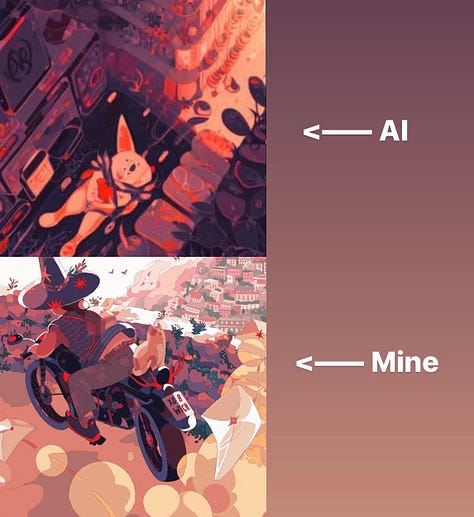
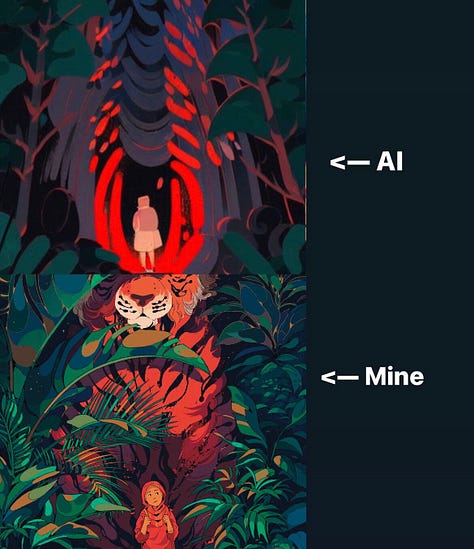
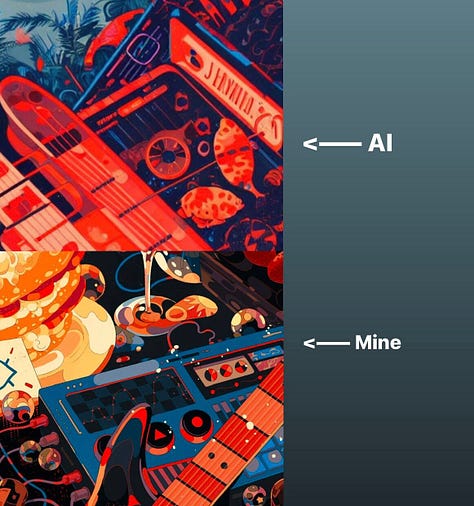
Of course, ethical and moral questions must be discussed when using AI technology. However, I read a lot of fear of existence from most AI-critical posts. This fear is of course also justified, but it will not change the course of technological development either.
Conclusion
Huge changes are coming and I understand that people reject and fear these changes, but as mentioned several times in this article, we will not be able to stop these changes.
There are actually only three options for how designers can deal with the situation:
Refuse progress and compete with the AI at a certain point and lose.
Change jobs and look for a job that cannot be replaced by AI for an indefinite period of time.
Use the progress for oneself. Use AI technology for oneself and continue to work in the design field, even if the tasks change.
I belong to the last group and although I feel a certain fear of the future, I also feel an incredible excitement and curiosity at the same time and I am curious how AI will change the world in the next few years. Positively and negatively.




